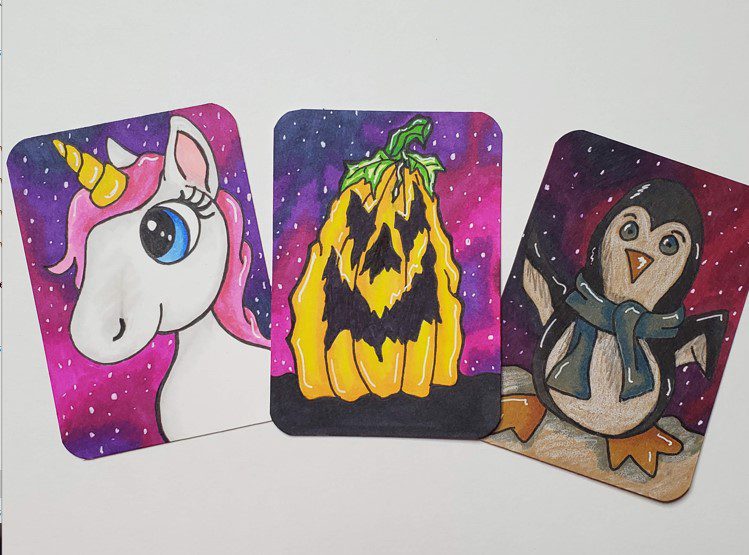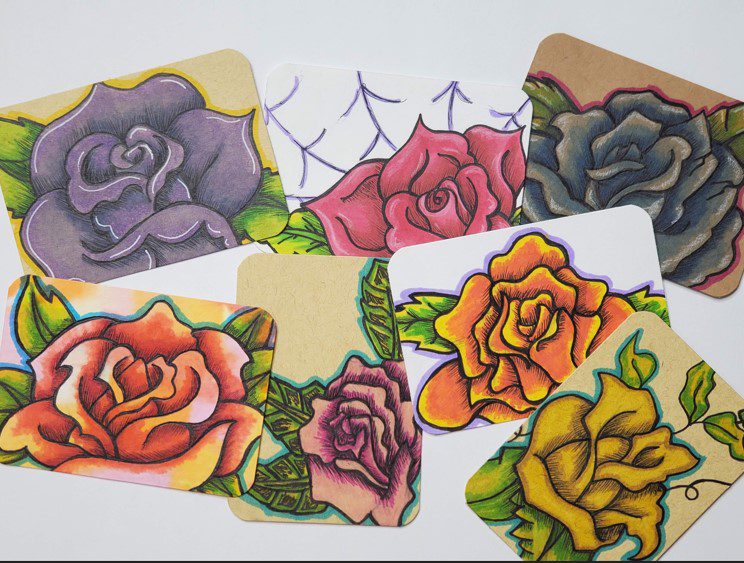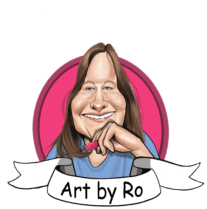Succeeding As a Self Taught Artist
It’s up to you where and how to pursue this education. And in this article I’ll share with you some of the ways to learn and grow as a self taught artist. There are many other ways as well, but this list will help get you started down your path.
What Is a Self Taught Artist
A self-taught artist is someone who has had little to no formal art education. Or, the education they did have doesn’t influence their artistic practice. It’s typical for a self-taught artist to follow their own path for inspiration and not necessarily follow any one particular genre or art movement.
All of these things give this type of artist all the freedom they need to pursue art creation on their own terms and without any restraints. But it also means you’re on your own to figure things out.
Self-taught artists may, or may not, work as a professional artist.
7 Tips for Becoming a Self Taught Artist
#1. Study from Books
One of the most obvious resources available to improve any skill are books. Your local library is a great place to start. Or, you could try a book resale shop if there’s one available in your area.
There is such a broad range of art topics that you could study it’s nearly impossible to recommend any specific books here. These topics include books on how to draw specific subject matter, how to shade, paint, or do pen & ink.
Then within those topics there’s sub-topics for each one. There are literally thousands of books available on just about any art topic.
If you’re interested in learning from books it’s probably best to just visit your local library and look through the ones they have available and choose a few that seem interesting to you. Learning art is a long process and if you’re not interested in what you’re learning, you’re not likely to stick with it for too long.
#2. Watch Video Tutorials from Different Artists and Teachers
Video tutorials are another obvious resource that’s available to most people these days. As with learning from books, it’s important to find topics that interest you.
Something to keep in mind when watching video tutorials is to look for nuggets of information that are helpful to you. It’s not necessary to love everything a particular artist/teacher is showing you. But there might be one, or a few, things that speak to you.
As you’re learning from these videos be sure to apply what you’ve learned or were inspired by as quickly as possible. And don’t be afraid to change things up and make it your own. You don’t have to follow everything exactly as you were shown. Use what you learn as inspiration to follow your own path.
#3. Finish What You Start
This is a big one for artists. It’s so common to start a work of art and give up on it before it’s finished. Before you know it, you have stacks of half finished artwork sitting in every corner of your house.
Often this happens because we get inspired to try something fun and exciting, but it may be a bit beyond our skill level. Then when things aren’t turning out the way we envisioned them in our heads we give up on it thinking we will come back to it later when we have more confidence.
The problem is we never get back to it. And I know for myself, I can’t even remember where I was going with these unfinished pieces if I do try to finish them later on. As a self taught artist you don’t have anyone to guide you so you need to guide yourself.
If you can get yourself to focus and enjoy the process instead of only caring about the end result, your journey will be more rewarding and productive. If you’re trying to create something new or push yourself out of your comfort zone it should be expected that it’s not going to turn out exactly as you had hoped. But the benefits to your creativity and skill level will far outweigh the benefits of the results themselves.
Make a commitment to yourself to finish anything you start and never give up on your vision. Because even the “failed” pieces will get you one step closer to your goals.
#4. Do Art Skill Improvement Exercises
There are many different art exercises you could do to improve your skills. These are things you should do in addition to the artwork you create.
These exercises will help you develop hand-eye coordination, how to see better, and help you to control how your hand moves and where it goes on the paper or canvas.
Scribble art is a fun way to learn how to create value in your artwork. It teaches you the principles behind how the marks you make on your paper create the various values in your artwork. And it produces some very interesting works of art as well.

Click here to see our Beginner’s Guide to Scribble Art.
Drawing from life is a great way to improve your art skills. It helps improve hand-eye coordination, as well as teaching you to see what you’re drawing. Learning to draw is very much about observation and learning to see things correctly. And as a self taught artist you’ll need to develop the skill of assessing your own artwork.
Quick sketching is another great way to develop your drawing skills in a very short amount of time. It’s perfect for brainstorming ideas and concepts for your artwork. And it’s good for warming up before working on more important works of art. Set a timer for three or five minutes and do as many sketches as you can before the timer goes off.
#5. Work Small
There are many benefits to working on a smaller scale. And this is what changed everything for me. Doing this allows you to create more art in less time. Which means you increase your skills more quickly.
This doesn’t mean you have to work small all the time. But including some smaller works of art can be extremely beneficial to your journey. Especially for practice pieces where you are trying to learn a new technique or medium.
I like doing my artwork on artist trading cards (ATCs). These miniature works of art are meant to be traded, but they’re also a great way to develop your art and drawing skills.

Click here to see our Beginner’s Guide to ATCs.
Working small will allow you to finish what you start more easily which creates a sense of accomplishment and builds momentum to keep you going.
#6. Draw Something Again
Drawing the same subject multiple times is a wonderful creativity exercise. It pushes you to get out of your comfort zone and try new things. And to be successful as a self taught artist you need to be willing to push yourself from time to time.
In the Art by Ro Facebook group we do weekly challenges for this exact purpose. There is a new theme each week for everyone to focus on.
Drawing something multiple times also helps with not knowing what to draw. By doing these challenges you already know what to draw for the week. You just need to figure out how to draw it and what to draw it with.

You can learn more in our Daily Art Challenge post.
#7. Stay Consistent
Being consistent is very important. You’re better off spending less time each day making art, than trying to fit in big chunks of time less frequently.
I often hear complaints about how there’s not enough time for creating art. This is where working on a smaller scale can really help. It’s much harder to feel motivated to work on something that’s going to take you ten hours to complete than if it’s only going to take an hour or two.
Find ways to fit your creative time into your schedule as consistently as your life will allow. Even if it’s only for five minutes a day.
Being a Self Taught Artist – Conclusion
There are many benefits to being a self taught artist. But there are many struggles as well. The most important thing is to practice as consistently as you can and know what your goals are.
Look at other artist’s work to find inspiration and get ideas for what skills you want to develop. And don’t forget to enjoy the process. Afterall, creating art is supposed to be fun.
More Art Tutorials
- Get Started with a 30 Day Challenge
- How to Draw a Sphere
- Finding Your Artistic Style
- Using Line in Art
- How to Shade with Pencil



